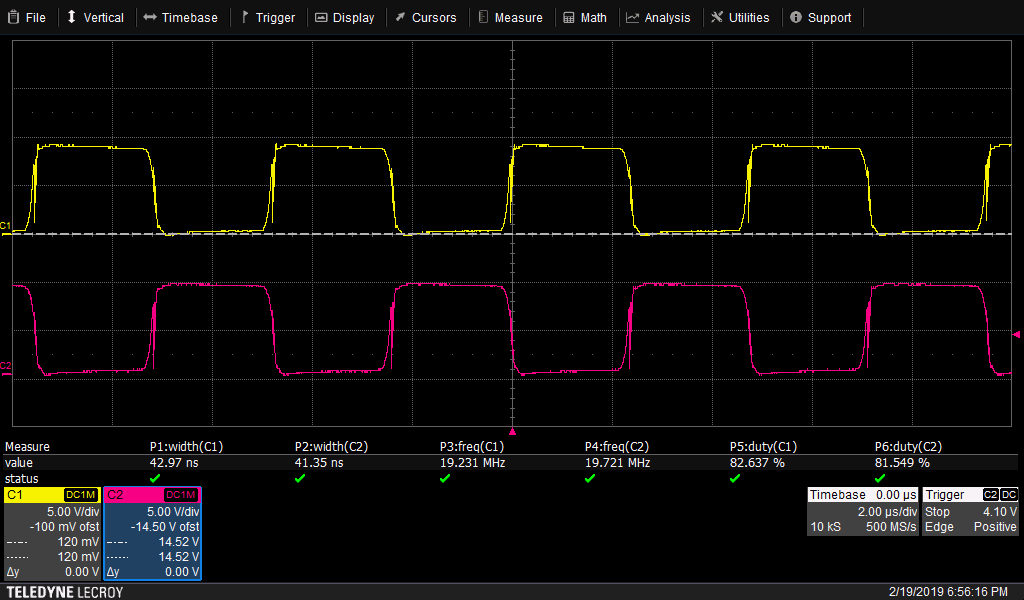Hi! I've prototyped a half wave bipolar circuit to generate +/-13V from 5V. Total primary current in is about 700mA. The transformer is Wurth 1.7:1 760030013 (rated for 350 mA). So, the transformer is being pushed way to hard at this point and I'll switch to a 1A transformers later.
On both primary legs there's a glitch you can see below. Any idea what this might be? Perhaps a byproduct of magnetic saturation?
The topology is as shown below. This is similar to Fig 50 in the SN6505B spec with the ground moved to center of cap stack. I understand there's a requirement that the loads be very close in magnitude otherwise a flux imbalance occurs. Any thoughts on how much disparity there can be before trouble arises and what to look for? From what I've been able to understand, a 10% current imbalance will manifest as a 10% change in V-t product, and if that drops below your minimum, then all bets are off. So, one leg will see V-t product go up, another see V-t go down. Unfortunately, there's not a lot I can find written about this.




